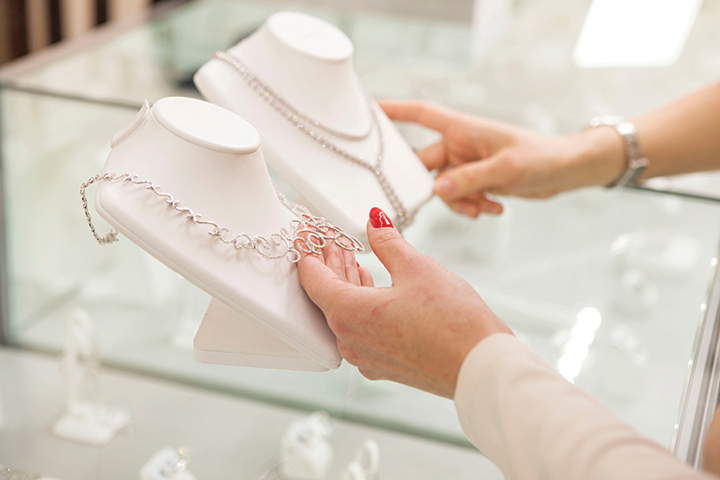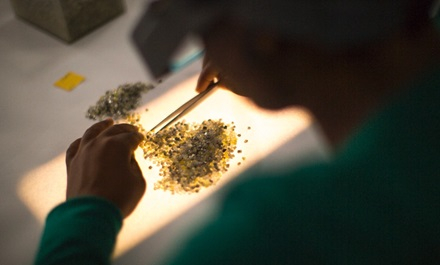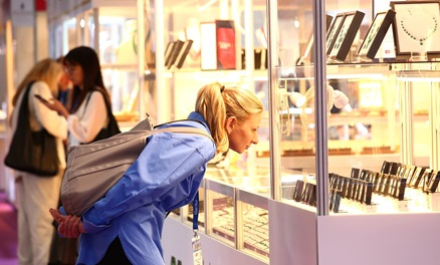The diamond industry is adopting fresh marketing strategies to foster consumer demand for natural diamonds amid a challenging business environment. These initiatives are largely dependent on retailer partnerships for deeper market engagement and social media for a more tailored and modern approach.
This article first appeared in the JNA November/December 2024 issue.
Diamond industry stakeholders are zeroing in on retailers and social media to reinvigorate consumer demand for natural diamonds in an ever-evolving business environment.
At a trade presentation during Jewellery & Gem WORLD Hong Kong in September, De Beers CEO Al Cook projected natural diamond demand to increase by 3 per cent annually till the end of the decade. Partly fuelling the sector’s recovery is the expected increase in engagements as well as the expansion of diamond’s role as a symbol of love beyond romance.
According to Cook, aside from the myriad supply and geopolitical challenges that created the “perfect storm” for the diamond industry in 2023 and 2024, sales were likewise hurt by the drop in engagements resulting from couples not forming during the pandemic due to lockdowns. He noted that it takes on average three years for new couples to get engaged.
“As we move further away from pandemic-related lockdowns, more of the couples that have since formed will likely get engaged. Signet proprietary data indicates a 25 per cent increase in US engagements over the next three years. Signet also saw a 4 per cent increase in engagements in the second quarter of 2024 alone, and their predictive measures show a 9 per cent increase in the milestones that lead to the purchase of an engagement ring,” Cook shared.
Aside from the bridal category, bolstering desire for diamonds among younger generations in key markets is another priority for De Beers. Pivotal to this is its collaborations with major retailers – Signet in the US, Chow Tai Fook Jewellery Group in China, and Tanishq in India. De Beers Brands CEO Sandrine Conseiller noted, “We have decided to be where the consumer is – in retail.”
US engagement
According to Conseiller, Gen Zs – together with millennials – represent more than 60 per cent of buyers of diamond jewellery in the US. Within 10 years, they will account for over 40 per cent of the luxury market as a whole. These consumers tend to wear their jewellery every day, get married later and are heavily influenced by social media. Among De Beers’ priorities in the US are differentiating lab-grown diamonds (LGDs) from natural diamonds and making the latter culturally relevant to Gen Z consumers, in partnership with Signet.
Since the bridal segment of the US diamond jewellery market is worth some US$10 billion, De Beers and Signet launched the “Worth the Wait” campaign focusing on themes of modern love and evolving dynamics. Unveiled in October, it targets Zillennial couples who are leading the engagement recovery.
“Signet proprietary data indicates that more than 2.5 million people will get married this year and the year to come. These are not only the traditional couples but also Hispanic, African-American and LGBTQ+ couples. These communities are even more likely to get married this year than the classic ones,” Conseiller explained. “The campaign is tailored specifically to appeal to these couples and make them choose natural diamonds for their engagement.”
In addition, De Beers has trained 80 per cent of Signet’s 22,000 jewellery counsellors to sell natural diamonds to consumers more effectively. It will also adapt the insights developed for the Signet campaign for a beyond-bridal version for independent jewellers in the US.
Indian opportunities
Fuelled by a vibrant economy and a growing middle class, India is now the second biggest diamond market, representing 11 per cent of global demand.
De Beers intends to improve diamond acquisition rates there, drive sales of bigger diamonds in a market still largely focused on pointers and increase public familiarity with natural diamonds.
To do so, it has partnered with jewellery retail giant Tanishq to connect more Indian consumers with the rarity and value of natural diamonds and unlock growth opportunities in the largely untapped market. De Beers will train Tanishq’s retail staff and launch a marketing campaign to build awareness and expand the customer base in the country, including first-time buyers.
Also supporting De Beers’ efforts is its Forevermark jewellery brand, which is being pivoted to exclusively serve the Indian market. The brand’s first flagship store will open in Delhi in the beginning of 2025.
Conseiller said, “There is an opportunity in India to have an international brand with an Indian feel. We will focus on self-purchase and educate consumers to buy diamonds more often and opt for bigger diamonds as well.”
Chinese momentum
And despite China’s market slump, the diamond trade remains committed to nurturing it back to health. Initiatives of De Beers and its retail partner Chow Tai Fook revolve around tapping the self-purchase market through influencer marketing and social media.
“The new generation is social. We found that in the social space, LGDs had a greater presence than natural diamonds. This is an issue since social media is where the new generation will get familiar with natural diamonds,” said Conseiller.
De Beers and Chow Tai Fook are therefore conducting an unbranded category marketing campaign relying on influencers to espouse the values of natural diamonds. Over 200 influencers were given the attributes of natural diamonds – enduring value, emotional elements, positive impact, among others – which they highlighted in their posts in a more organic fashion, making them more relatable to their followers.
At a forum organised by the Diamond Federation of Hong Kong (DFHK) during the September Fair in Hong Kong, Chow Tai Fook Managing Director Kent Wong underscored the importance of marketing and product innovation in making natural diamonds more attractive to younger generations.
“Our campaign with De Beers helps reposition diamonds in the market, moving from weddings to self-purchase. Through different scenarios such as chatting among friends or individual declarations, the social content highlights that consumers can buy diamonds for themselves,” he explained.
Designs can also be adjusted to enhance diamonds’ aesthetic appeal in China. Wong remarked, “Consumers are still interested in diamonds but want more affordable options. Diamonds can be added to gold jewellery, which presently moves well. Alternatively, smaller diamonds or platinum settings can help keep prices reasonable.”
Moreover, diamond jewellery designs have evolved from earlier Western concepts to more Oriental elements, making them more popular in the market, he added.
Retail focus
The Natural Diamond Council (NDC) is likewise banking on retailers to bring its message of “Real. Rare. Responsible.” to consumers.
“Our campaigns focus on these key values of natural diamonds, which make them truly unique. These are also the three values that are most important to consumers,” said David Kellie, CEO of NDC, at the DFHK forum.
NDC’s retail partners will share this message in more than 11,500 stores in over 500 cities around the world throughout 2025, he continued.
The council also prepared a new Provenance Story, focusing this time on the Northwest Territories of Canada. Botswana is the subject of the current campaign. Likewise debuting next year is a new diamond jewellery campaign featuring its brand ambassador, actress Lily James.
NDC has formed the Natural Diamond Club as well, which brings together multiple retailers to strengthen collaboration in key markets. Its first retail partnership was signed three years ago with Chow Tai Fook.













